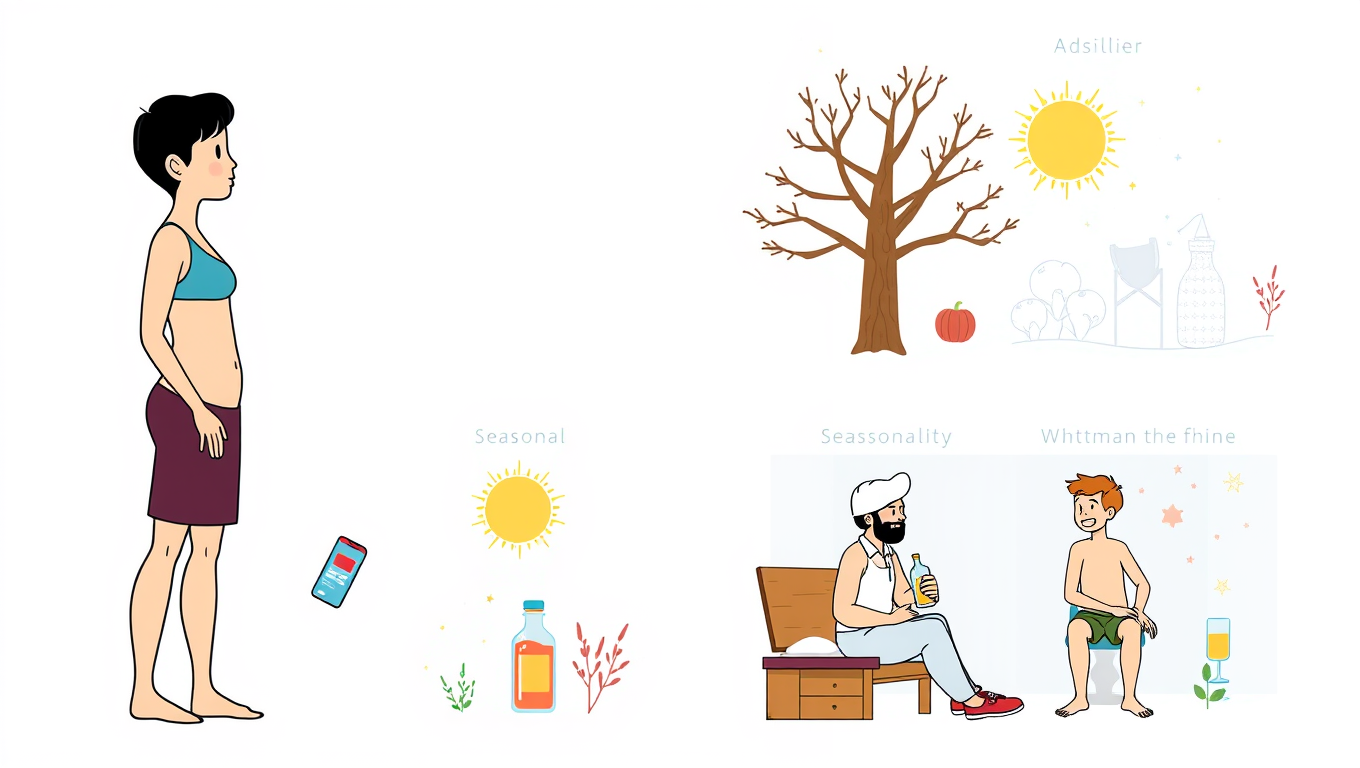While we try to keep things accurate, this content is part of an ongoing experiment and may not always be reliable.
Please double-check important details — we’re not responsible for how the information is used.
Alcoholism
Heavy Drinking Linked to Signs of Brain Injury, Memory Problems
Heavy drinkers who have eight or more alcoholic drinks per week have an increased risk of brain lesions called hyaline arteriolosclerosis, signs of brain injury that are associated with memory and thinking problems, according to a new study.

Addiction
The Pressure to Conform: How Peer Norms Drive Risky Behavior in Young Adults
The study explores how social influences, particularly peer pressure, impact substance use — and misuse — among young adults. A confidential online survey on alcohol use was given to 524 students at a large public university (not UTA).
Addiction
The Seasons’ Influence on Your Body: How Time Affects Tolerance, Weight Gain, and More
Researchers have found that drug effectiveness, alcohol tolerance, and carbohydrate metabolism change with the seasons. Their findings are based on a comprehensive seasonal gene expression map, which investigated over 54,000 genes in 80 tissues in monkeys across one year. The study has implications for drug prescription and precision medicine.
Addiction
A New Approach to Reducing College-Aged Drinking Harms: Counter-Attitudinal Advocacy (CAA) Shows Promise
Researchers have developed and tested an intervention called Counter-Attitudinal Advocacy and compared it to to the well-established Personalized Normative Feedback (PNF) to evaluate their effectiveness in decreasing drinks per week, peak blood alcohol concentration and alcohol-related consequences relative to a control group.
-

 Detectors9 months ago
Detectors9 months agoA New Horizon for Vision: How Gold Nanoparticles May Restore People’s Sight
-

 Earth & Climate10 months ago
Earth & Climate10 months agoRetiring Abroad Can Be Lonely Business
-

 Cancer10 months ago
Cancer10 months agoRevolutionizing Quantum Communication: Direct Connections Between Multiple Processors
-

 Albert Einstein10 months ago
Albert Einstein10 months agoHarnessing Water Waves: A Breakthrough in Controlling Floating Objects
-

 Chemistry9 months ago
Chemistry9 months ago“Unveiling Hidden Patterns: A New Twist on Interference Phenomena”
-

 Earth & Climate10 months ago
Earth & Climate10 months agoHousehold Electricity Three Times More Expensive Than Upcoming ‘Eco-Friendly’ Aviation E-Fuels, Study Reveals
-

 Agriculture and Food10 months ago
Agriculture and Food10 months ago“A Sustainable Solution: Researchers Create Hybrid Cheese with 25% Pea Protein”
-

 Diseases and Conditions10 months ago
Diseases and Conditions10 months agoReducing Falls Among Elderly Women with Polypharmacy through Exercise Intervention





























